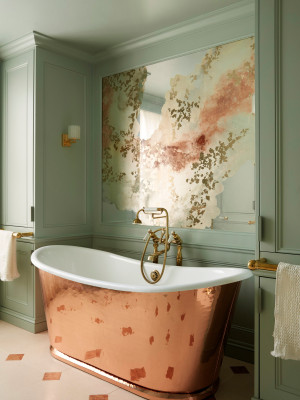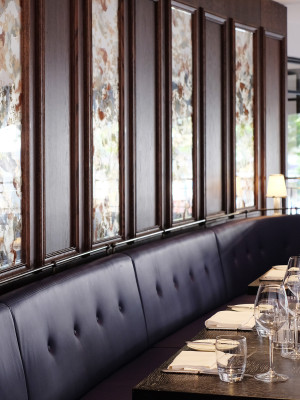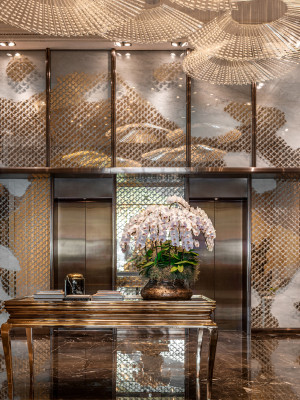verre églomisé
n. /ˌvɛː ˌeɪɡlɒmiˈzeɪ/

The technique of verre églomisé is named after Jean Baptiste Glomy, a Parisian picture-framer to Louis XV. (The phrase verre églomisé literally means ‘Glomy-ised glass’ but, although he popularised the art form in the 18th century, Glomy lent his name to a far older technique, examples of which predate the Roman era.
The production of verre églomisé involves many stages; the reverse side of glass is gilded with gold or silver leaf, fixed with a gelatine-based liquid adhesive. Once dried, the leaf is burnished, resulting in a highly mirrored surface.
We use these age old methods combined with painting and other techniques to create richly layered designs.

The tools of verre églomisé – gilder’s pad, knife, tip, size.

The size, or adhesive, is a gelatine dissolved in water.

Gold leaf on the pad.

Lifting gold leaf with the gilder’s knife.

Cutting gold leaf on the pad.

Lifting gold leaf with the gilder’s tip.

The gilder’s tip in Hole & Corner.





